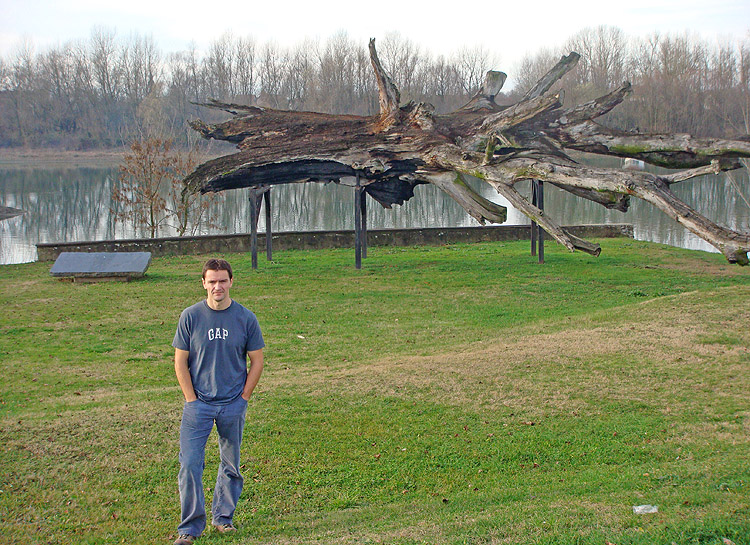HIS 135
Unit 8: The Key Events of the Last Half Century

The Donja Gradina Memorial was a mass execution site within the much larger Jasenovac concentration camp complex during World War II. The camp was located on the right bank of the River Sava some 100 km south of Zagreb (near the present border between Croatia and Bosnia). According to Andrej Jovanovic, former student, the information marker for this simple dead tree (aka "tree of horror") reads: "From the second half of 1942, when the village Donja Gradina became the part of concentration camp Jasenovac, until the end of April of 1945, when this area was liberated by the forces of 45th division of the 2nd Army of Yugoslavia, on this poplar tree, the ustase (Croatian Nazis) performed many hangings of participants of the NOR (National Liberation War) and concentration camp prisoners." Estimates vary widely about just how many people perished in this camp. Photo credit Andrej Jovanovic
 What you
must do in this unit
What you
must do in this unit
- Read chapters 5 and 9 in the Keylor
textbook. Or read chapter 8 in the Brower etext.
- Post (or respond) your thoughts/ideas about this unit's reading and assignment in the Blackboard online discussion forum. Do not post your assignment there.
- Submit the Module Essay Paper.
What you can do in this unit
- Two of the key individuals in bringing about the end of communism in Eastern and Central Europe were Vaclav Havel and Lech Walesa. Former students Olivia Graham and Lisa Vicente have written short papers about Havel and Walesa respectively (These are *.pdf files).
- You may choose to listen to some short remarks by your instructor on the module essays
as a mp3 file. You can also read the instructions as
a txt file. (These remarks are a bit on the old side.)
Some videos that you can watch for this unit
Extra Credit Options
- For extra credit of a maximum of 25 points, write a short paragraph in which you explain why you think it is important to study history (check these two links for more information, Historians and Why We Study History--still useful even though it was originally created for HIS 101).
- For extra credit, please suggest a
relevant website for this unit of the course. Send the title of the site, the url and a
brief explanation why you find the information interesting and applicable to
the material being studied this unit.
|

